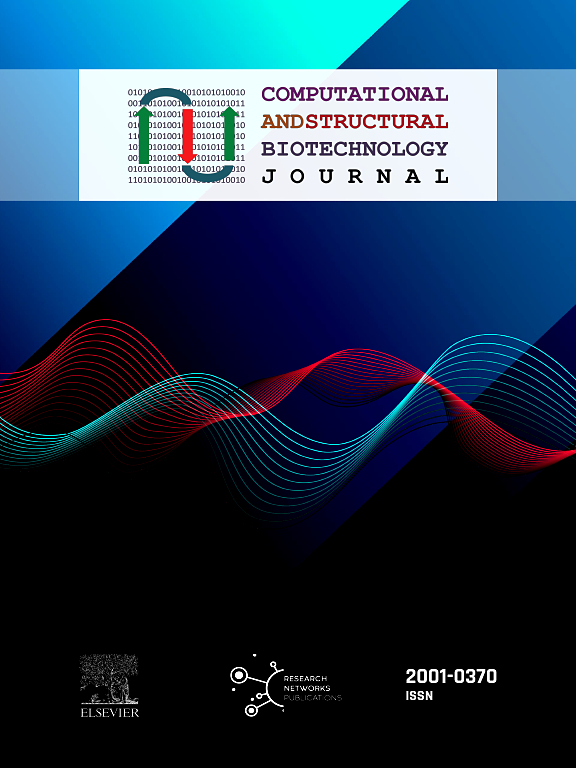Development and validation of a novel AI-derived index for predicting COPD medical costs in clinical practice
IF 4.4
2区 生物学
Q2 BIOCHEMISTRY & MOLECULAR BIOLOGY
Computational and structural biotechnology journal
Pub Date : 2025-01-01
DOI:10.1016/j.csbj.2025.01.015
引用次数: 0
Abstract
Background
Chronic Obstructive Pulmonary Disease (COPD) is a major contributor to global morbidity and healthcare costs. Accurately predicting these costs is crucial for resource allocation and patient care. This study developed and validated an AI-driven COPD Medical Cost Prediction Index (MCPI) to forecast healthcare expenses in COPD patients.
Methods
A retrospective analysis of 396 COPD patients was conducted, utilizing clinical, demographic, and comorbidity data. Missing data were addressed through advanced imputation techniques to minimize bias. The final predictors included interactions such as Age × BMI, alongside Tumor Presence, Number of Comorbidities, Acute Exacerbation frequency, and the DOSE Index. A Gradient Boosting model was constructed, optimized with Recursive Feature Elimination (RFE), and evaluated using 5-fold cross-validation on an 80/20 train-test split. Model performance was assessed with Mean Squared Error (MSE), Mean Absolute Error (MAE), Mean Absolute Percentage Error (MAPE), and R-squared (R²).
Results
On the training set, the model achieved an MSE of 0.049, MAE of 0.159, MAPE of 3.41 %, and R² of 0.703. On the test set, performance metrics included an MSE of 0.122, MAE of 0.258, MAPE of 5.49 %, and R² of 0.365. Tumor Presence, Age, and BMI were identified as key predictors of cost variability.
Conclusions
The MCPI demonstrates strong potential for predicting healthcare costs in COPD patients and enables targeted interventions for high-risk individuals. Future research should focus on validation with multicenter datasets and the inclusion of additional socioeconomic variables to enhance model generalizability and precision.
求助全文
约1分钟内获得全文
求助全文
来源期刊

Computational and structural biotechnology journal
Biochemistry, Genetics and Molecular Biology-Biophysics
CiteScore
9.30
自引率
3.30%
发文量
540
审稿时长
6 weeks
期刊介绍:
Computational and Structural Biotechnology Journal (CSBJ) is an online gold open access journal publishing research articles and reviews after full peer review. All articles are published, without barriers to access, immediately upon acceptance. The journal places a strong emphasis on functional and mechanistic understanding of how molecular components in a biological process work together through the application of computational methods. Structural data may provide such insights, but they are not a pre-requisite for publication in the journal. Specific areas of interest include, but are not limited to:
Structure and function of proteins, nucleic acids and other macromolecules
Structure and function of multi-component complexes
Protein folding, processing and degradation
Enzymology
Computational and structural studies of plant systems
Microbial Informatics
Genomics
Proteomics
Metabolomics
Algorithms and Hypothesis in Bioinformatics
Mathematical and Theoretical Biology
Computational Chemistry and Drug Discovery
Microscopy and Molecular Imaging
Nanotechnology
Systems and Synthetic Biology
 求助内容:
求助内容: 应助结果提醒方式:
应助结果提醒方式:


